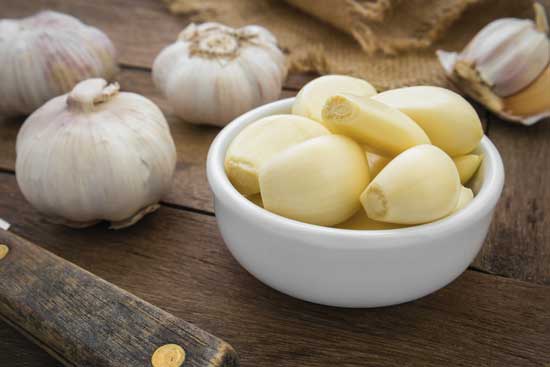Extending milk’s shelf life; FDA is redefining ‘healthy’
NEWS
 Reviewing satiety of fortified pasta
Reviewing satiety of fortified pasta
Pasta fortified with protein or fiber does not appear to contribute to greater levels of satiety than regular pasta, according to a recent study in the Journal of Food Science.
The study compared satiety after high-protein pasta (16 grams protein, 6 grams fiber), high-fiber pasta (11 grams protein, 8 grams fiber), or control pasta (11 grams protein, 6 grams fiber) in a randomized, placebo-controlled, double-blind crossover trial. The primary outcome was satiety assessed by Visual Analogue Scales (VAS) at 0, 15, 30, 45, 60, 90, 120, and 180 minutes daily after consuming the pastas.
Participants found the high-protein pasta less palatable, but there was no difference in gastrointestinal tolerance across the three. Interestingly, men consumed a significantly higher amount of calories throughout the rest of the day compared to the high-fiber, a result the authors did not expect. Overall, the authors say they did not observe significant differences among the pastas on any of the VAS scales, which include hunger, satisfaction, fullness, and prospective food intake.
“Our results do not support the idea that high-protein or high-fiber pasta produces a greater satiety response compared to pasta with lower amounts of either nutrient,” the authors write, noting that tasters were not able to tell the difference among the three. According to Renee Korczak, one of the researchers, this may be attributed to the fact that “pasta, by itself, may already be a satiating food.”
Appeal of daypart-specific products
More than a quarter of consumers are drawn to food and beverage products positioned for a specific daypart, according to new research from Canadean. According to the report, this trend aligns with consumer willingness to experiment with food and drink positioned for consumption outside of normal eating hours.
“Brands such as Cadbury, with its Dairy Milk Medley, are redefining consumption occasions by incorporating ingredients that are reminiscent of meals or desserts in order to extend consumption into new times of the day,” says Tanvi Savara, consumer insight analyst at Canadean. “Others take inspiration from familiar flavor profiles and add an experimental twist to generate appeal.”
While these products currently tend to appeal more to brand-loyal consumers, manufacturers can try to appeal to a wider base by addressing purchase motivations that are relevant for that daypart, says Savara. “For example, consumers are more likely to snack on health-oriented choices such as fruit and yogurt earlier in the day, whereas indulgence is more likely to be an influence toward the end of the day, with chocolate or savory snacks preferred late at night,” she notes.
Extending milk’s shelf life
A low-temperature, short-time (LTST) method of treating milk can extend its shelf life by weeks, according to a Purdue University study published in SpringerPlus. The research, which was conducted by IFT member and Purdue associate professor Bruce Applegate and collaborators from Purdue and the University of Tennessee, found that that increasing the temperature of milk by 10 degrees for less than a second eliminates more than 99% of the bacteria left behind after pasteurization.
“It’s an add-on to pasteurization, but it can add shelf life of up to five, six, or seven weeks to cold milk,” says Applegate.
In the study, researchers sprayed tiny droplets of pasteurized milk, which was inoculated with Lactobacillus and Pseudomonas bacteria, through a heated, pressurized chamber, rapidly raising and lowering their temperatures about 10° Celsius but still below the 70° Celsius threshold needed for pasteurization. Following the treatment, bacterial levels fell below detection limits and shelf life was extended up to 63 days.
The researchers believe this treatment, which doesn’t add any extra energy to the system, could potentially reduce waste and allow milk to reach distant locations. In addition, the process does not affect the milk’s sensory qualities; consumer panelists did not detect differences in color, aroma, taste, or aftertaste between LTST milk and the control.
--- PAGE BREAK ---
 Eliminating garlic breath
Eliminating garlic breath
Garlic breath—the unpleasant taste and aroma that lingers after consuming the fragrant member of the allium family—can last for almost a day. But according to a recent Journal of Food Science study, chewing mint leaves and eating apple and lettuce can help alleviate the condition.
Garlic breath is caused by a number of volatiles, including allyl disulfide, allyl mercaptan, allyl methyl disulfide, and allyl methyl sulfide. In this study, researchers asked participants to consume water (control), raw, juiced, or heated apple; raw or heated lettuce; raw or juiced mint leaves; or green tea immediately after eating garlic. The levels of the garlic volatiles on the breath were analyzed from 1 to 60 minutes by selected ion flow tube mass spectrometry (SIFT-MS). Raw apple, raw lettuce, and mint leaves significantly decreased all of the garlic breath volatiles in vivo, which is likely a result of enzymatic deodorization, during which volatiles react with phenolic compounds.
In addition, both heated apple and heated lettuce produced a significant reduction of diallyl disulfide and allyl mercaptan, and the authors write that the presence of phenolic compounds that react with the volatile compounds even in the absence of enzymes is the most likely mechanism. Apple juice and mint juice also had a deodorizing effect on most of the garlic volatiles but were generally not as effective as the raw food; green tea had no effect.
Garlic was also blended with water (control), polyphenol oxidase (PPO), rosmarinic acid, quercetin, or catechin, and the volatiles in the headspace analyzed from 3 to 40 minutes by SIFT-MS. Rosmarinic acid, catechin, quercetin, and PPO significantly decreased all garlic breath volatiles in vitro. Rosmarinic acid was the most effective at deodorization.
Click here to view a video interview with the researchers.
FDA redefining ‘healthy’
The U.S. Food and Drug Administration has started a public process to redefine the “healthy” nutrient content claim for food labeling in order to “provide consumers with information and tools to enable them to easily and quickly make food choices consistent with public health recommendations and to encourage the development of healthier foods by the industry,” according to the FDA’s website.
The move comes in response to a citizen petition that asked the agency to update nutrient content claim regulations to be consistent with current federal dietary guidance, particularly in regard to total fat intake. The types of fats consumers choose are important, explains Morrison Foerster’s James Schurz, who represents clients in food law cases. Under current rules, avocados and cashews, which are high in good fats, cannot be labeled as healthy even though they can be part of a nutritionally balanced diet.
Harrison and Lewis believe the FDA will also address sugar content in the new definition, noting that it may take into account newer evidence linking excessive sugar intake to health risks. “Our understanding about nutrition has evolved,” explains Schurz. “It follows that the definition for the ‘healthy’ labeling claim reflects our current understanding.”
The FDA will accept electronic or written comments until Jan. 26, 2017.
News Bites
• Auburn University Food Systems Institute created a website (aufsi.auburn.edu/fooddefense) with information about corporate defense within the food and agriculture sector, ranging from cybersecurity and operational security to threat intelligence, logistics security, and personnel and perimeter security.
• Barry Callebaut was named a qualifying recipient of the IBIE show’s Becoming Environmentally Sustainable Together (B.E.S.T.) in Baking recognition, which honors businesses that are contributing to equipment, packaging, ingredients, products, and/or services that foster energy and water conservation, decrease landfill waste, and promote overall healthy living and reduction in environmental impact.
• BASF has started planning for the construction of a new plant for vitamin A in Ludwigshafen, Germany.
• Blue Diamond opened a new state-of-the-art bulk storage warehouse, Warehouse 7, in Salida, Calif., to store up to 60 million pounds of almond meats, increasing its receiving capacity by 33%.
• Cargill and So Good Food, a subsidiary of Japfa, entered into a joint venture to produce and supply fully cooked poultry products in Indonesia.
• Carolina Innovative Food Ingredients received certification under the USDA National Organic Program, allowing the company to offer certified organic versions of all of its sweet potato ingredients.
• First Choice Ingredients purchased an 83,000-square-foot production facility that will double its production capabilities.
• Ganeden’s GanedenBC30 recently became the first probiotic ingredient to earn Non-GMO Project Verified status.
• Mazza Innovation announced that its Delta, Canada, botanical extraction facility is now a Good Manufacturing Practices facility registered by NSF International.
• Nellson announced plans to replace its Irwindale, Calif., operation with a new facility nearby.
• Nestlé came in as the No.1 food industry representative in the 2016 Dow Jones Sustainability Index.
• PROVA and Barry Callebaut have launched a joint project in Madagascar to empower vanilla farmers. PROVA also announced it is opening a Creative Workshop in its Paris laboratory that will also enhance its sweet brown flavors applications work in the United States.
• Q Laboratories recently celebrated its 50th anniversary.
• Siemer Specialty Ingredients launched a new content-rich website, siemerspecialtyingredients.com.
• Spiroflow Automation Solutions announced the opening of its new office in Greer, S.C.
• Steviva Ingredients earned its Safe Quality Food Level 2 certification at its new headquarters in Portland, Ore.
• Symrise was awarded gold status by EcoVadis for its responsible corporate business practices.
• Tate & Lyle expanded capacity at its oat ingredients manufacturing facility in Kimstad, Sweden.
 Melanie Zanoza Bartelme, Associate Editor
Melanie Zanoza Bartelme, Associate Editor
[email protected]
